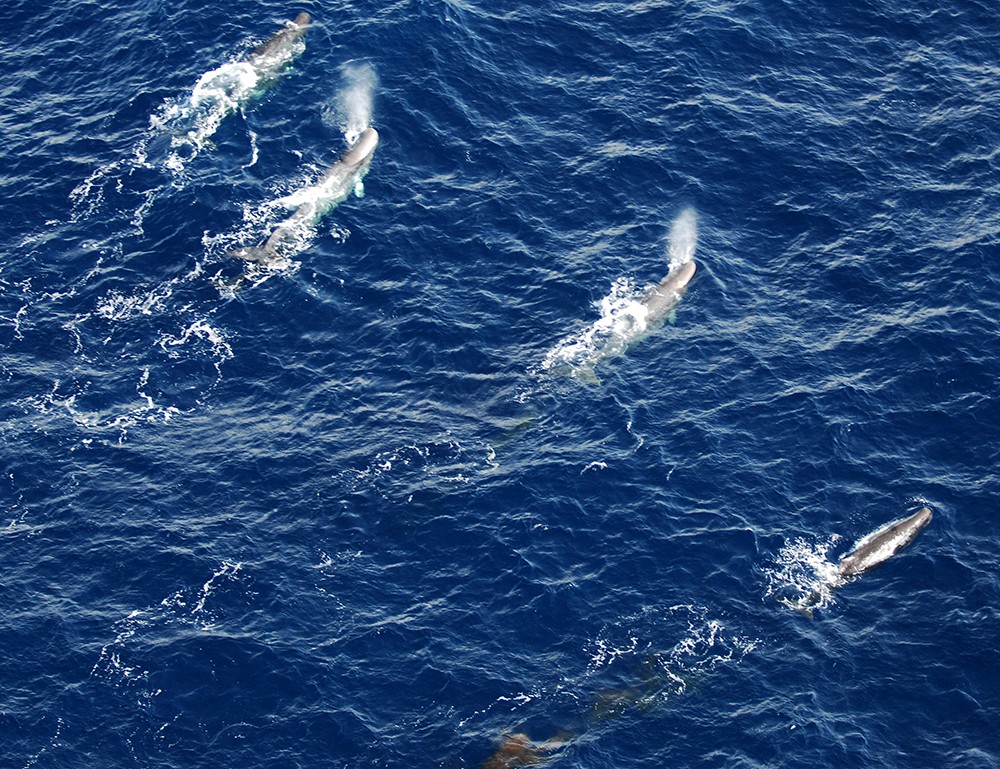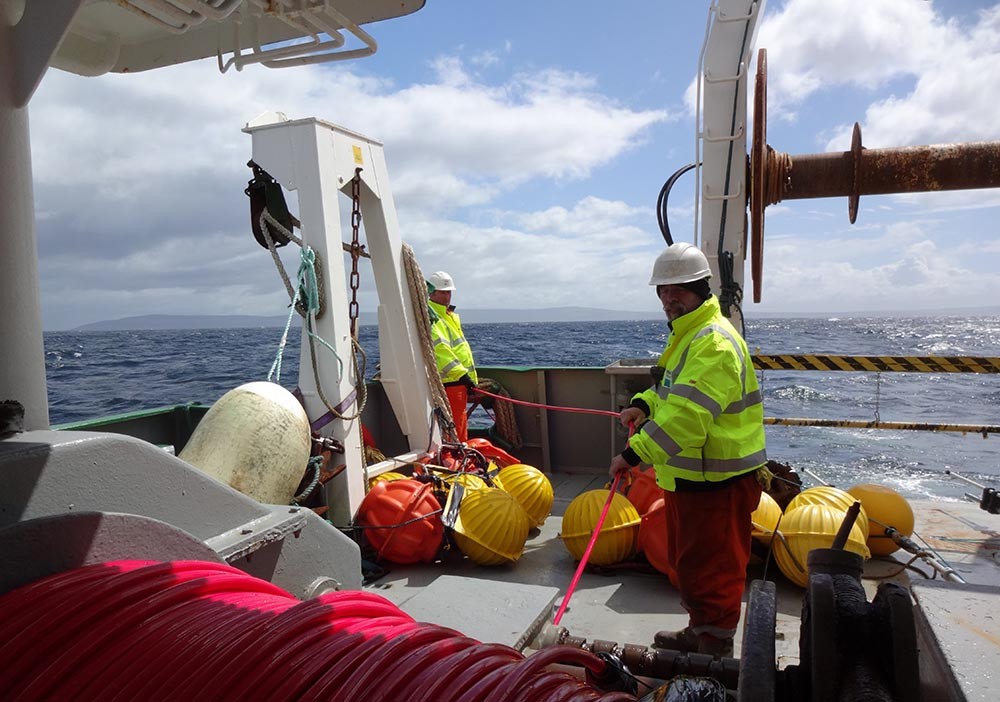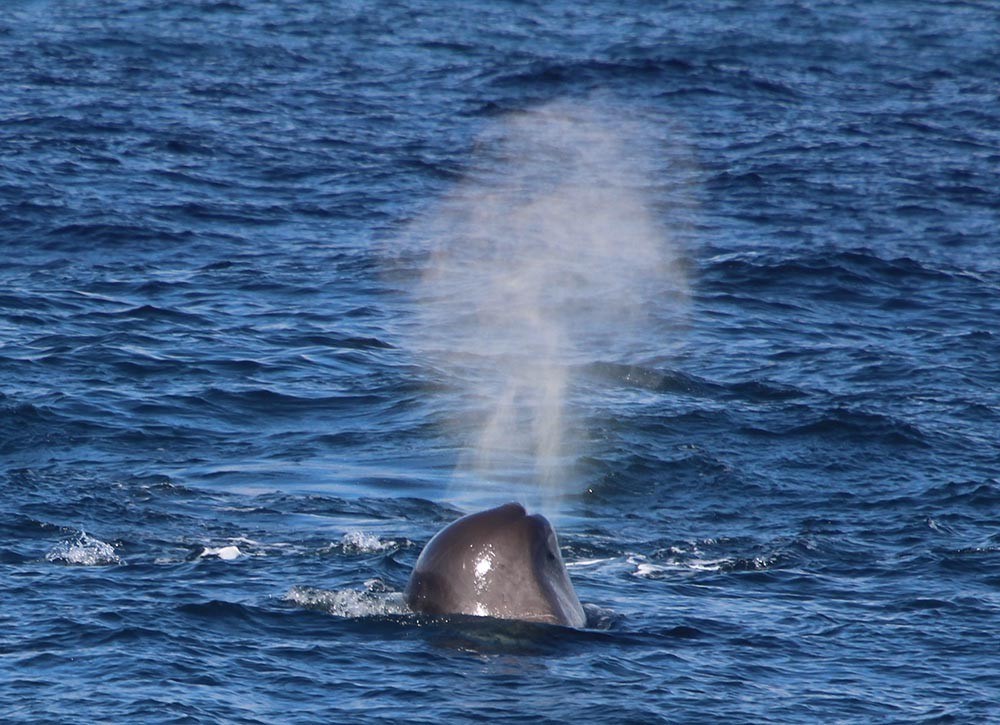
An estimated population of 380 sperm whales has been discovered in waters deeper than 300m off Ireland’s western shores.
Sperm whales are one of the most abundant great whale species in the deep waters of offshore Ireland, according to a new study by the Scotland-based Sea Mammal Research Unit Consulting (SMRU Consulting) and Galway-Mayo Institute of Technology (GMIT). The study, published recently in the Journal of Cetacean Research and Management,

The deep diving nature of sperm whales means that they are difficult to observe at sea at the best of times. During a single dive, sperm whales can spend nearly an hour at depths in excess of 300m, with only short periods at the surface. The limited time spent at the sea surface combined with the wild weather that prevailed throughout the survey – more than 70% of the time the team spent looking for marine mammals was during 3m swell and strong winds – resulted in only 11 individuals being sighted during 388 hours of effort. The ability of hydrophones to record sperm whale vocalizations, however, is not impacted by weather and surveys can continue through the night 24/7. In all, 391 acoustic sperm whale detections were recorded.
Dr Berrow adds: “It is amazing that we can accurately count the number of sperm whales in offshore Irish waters in spite of seeing just a few actual whales. This type of acoustic monitoring is a very powerful survey tool, especially in the wild Atlantic waters off the west coast of Ireland as we can survey during the day and night in high sea-states.”
“Each whale was pinpointed by comparing the exact time that each click arrived at each hydrophone in the array and then triangulating bearings from sequential clicks over extended encounters. Vocalizing whales were counted over the course of six dedicated surveys between May and October during 2015 and 2016. After the surveys the data was analysed to account for those whales present but not acoustically detected.
The results revealed that sperm whales occurred at densities as high as 4.2 whales per 1000km2 in some regions and that they seem to prefer seabed areas that sloped to the northwest, which encompasses the Erris and Rockall Basins. There was a dense concentration of sperm whales in the South Brona Basin canyon system near 350km west of County Kerry. Few whales were detected off the southwest slopes including the Goban Spur and Whittard Canyon.”

Dr Jonathan Gordon of SMRU Consulting and lead author, who has pioneered acoustic methods to study of sperm whales since the 1980s, says: “Sperm whales, like many deep diving mammals, were once extremely difficult to study as live animals at sea. Now, however, with deep sea listening equipment and highly automated analyses software, the location and behaviour of these giants of our seas are no longer hidden from us.”
Acoustic techniques provide an excellent method of monitoring sperm whales, and this first abundance estimate can be used as a baseline for Irish offshore waters. Sperm whale populations are still thought to be recovering after years of over-exploitation. Clearly Ireland provides very good habitats for sperm whales, the largest toothed animals in the world’s oceans.
The surveys were carried out from the Marine Institute’s RV Celtic Voyager and the yacht Song of the Whale, operated by Marine Conservation Research Ltd (MCR). The study was part of the ObSERVE-Acoustic project funded by the Department of Communications, Climate Action and the Environment and the National Parks and Wildlife Service, the Government of Ireland.
Listen to Dr Simon Berrow on RTÉ Radio 1 earlier.